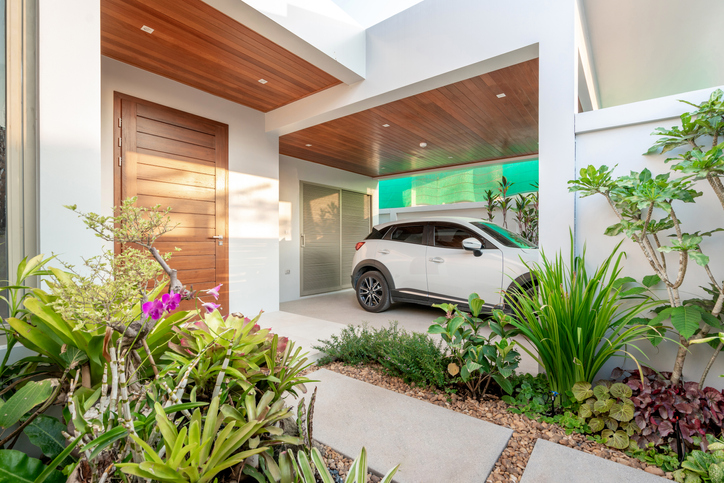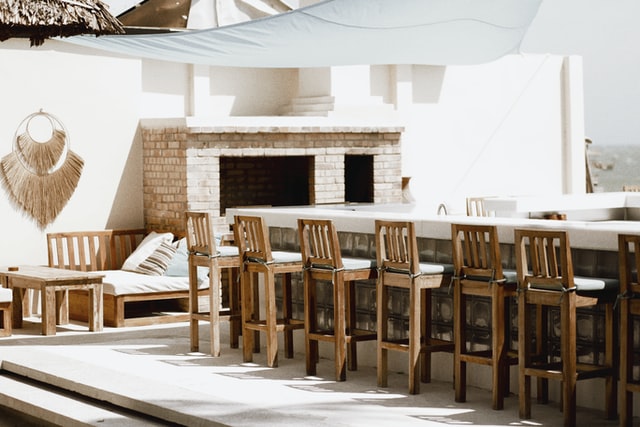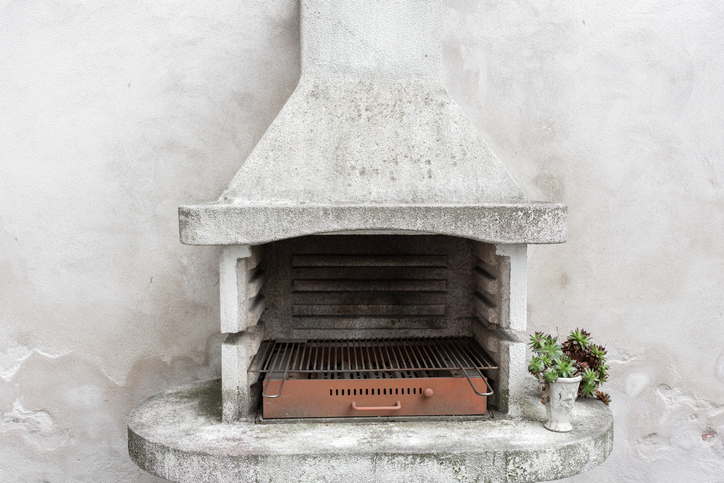Hardscape design generally refers to the hard surfaces in the yard like pathways, walkways, and patios. Usually these features are made from stone or concrete but can also be made from rocks, wood or other hard materials. Let’s look at some beautiful pathway, walkway and patio designs from these Porch professionals.
Poured concrete
Poured concrete is a common material for sidewalks and front entries. It’s a material that blends well with traditional sidewalks and driveways and is easy to create during the home building process. Taking care of poured concrete is relatively easy as its smooth surface is easy to shovel, sweep or pressure wash. Usually sections are poured in sections with a narrow spacer in between the sections; sometimes this space is filled with a piece of treated lumber. Aggregate concrete, which is concrete with larger stones, is another common style. Pouring the concrete in sections makes is less vulnerable to cracking or moving. Unfortunately, underground roots can force the concrete up and create cracks. It’s a good idea to maintain or fix these pieces of lifted concrete so they don’t become a tripping hazard.

Stamped concrete
Stamped concrete is an economical way to get the look of individual stones while using an inexpensive material: concrete. To create this look, concrete is poured then, while it’s still wet, stamped with a tool in the shape of uneven stones. Because the spaces in between the “stone” is not very deep, it makes it easy to sweep or shovel and keep clean. It’s also easy to pressure wash stamped concrete as you don’t have to worry about sand or gravel in between pavers.
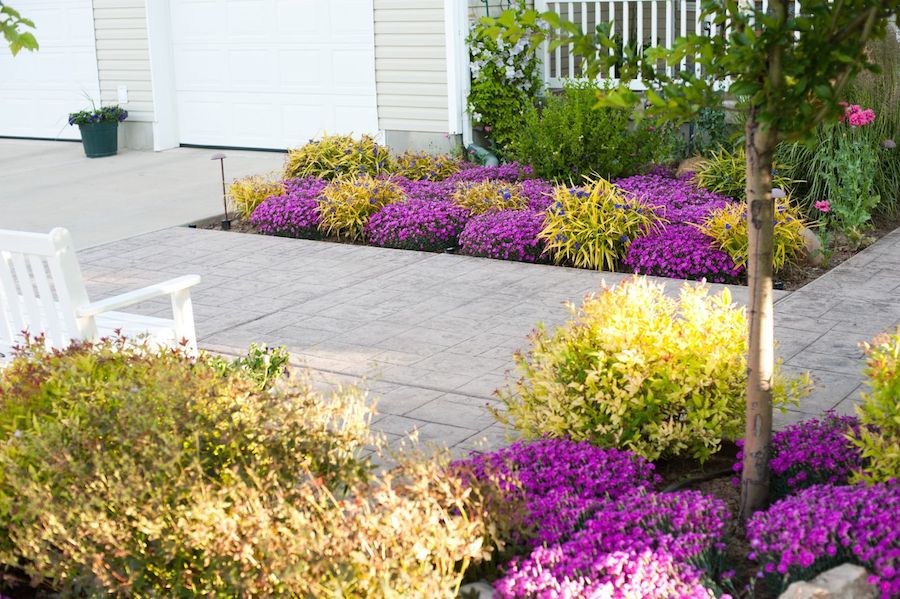
Stone tile pavers
Stone pavers are a traditional way to create hardscape areas. Most paving stones are made from concrete or concrete aggregate and is offered in a wide range of sizes, shapes and colors to suit any style of home. To create an even surface, the ground is first leveled then prepped with a layer of crushed rock or sand. It takes a lot of patience and skill to create an even patio or walkway using pavers and very often the material needs to be cut to fit the design. Instead of grout, sand is usually spread over the surface then swept into the tiny space in between the pavers. Because of the complexity and skill level, most homeowners choose to hire a professional to create a stone paver walkway or patio. Some designs call for a larger space in between the pavers in which moss or grass is allowed to grow, like this one.

Cobblestone
Cobblestone is essentially a style of paving stone but has a distinctly rustic look and feel. Cobblestone is usually made up of granite with slightly uneven or rounded edges that don’t form right angles when placed together. The effect is an older, worn look that many homeowners appreciate as well as an extremely durable and strong surface. Because of their small size, there is a bit more flexibility in the designs and patterns produced with cobblestone. Because of the nature of this material, a well-made cobblestone driveway or patio could last for over 100 years.
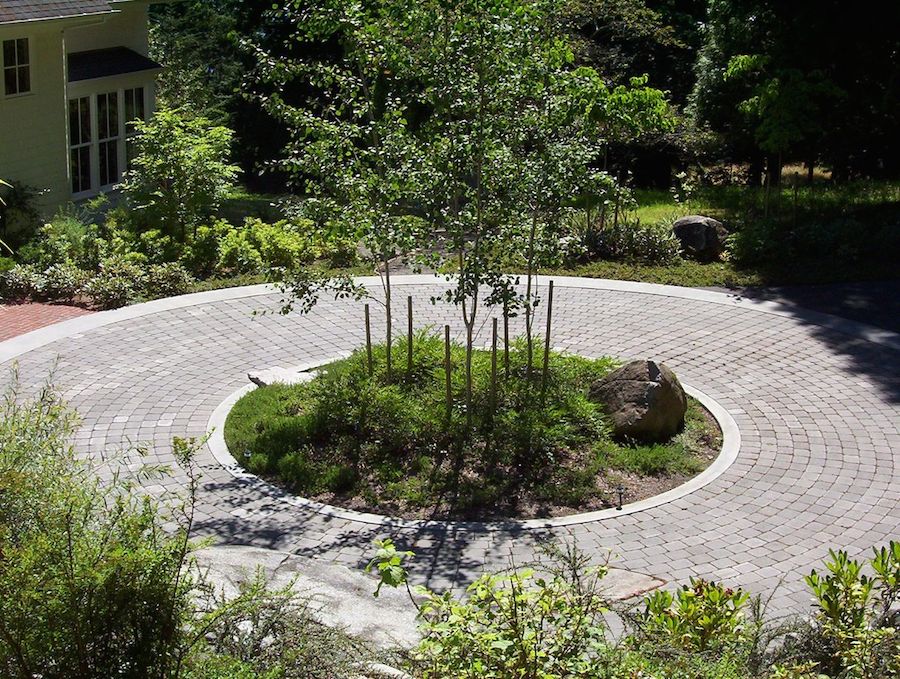
Mixed medium
Some yards look great with a combination of several different materials; the effect creates a dynamic design with variances in color, pattern and texture. This home (shown below) features poured concrete aggregate with a combination of red brick and river rock in between the large pavers. A crushed rock pathway leads you to another area of the yard while a moss-covered rockery staircase leads to the upper part of the yard. Although having a variety of surfaces might pose a challenge when it comes to cleaning and maintenance, it can help create a unique feature in the yard.
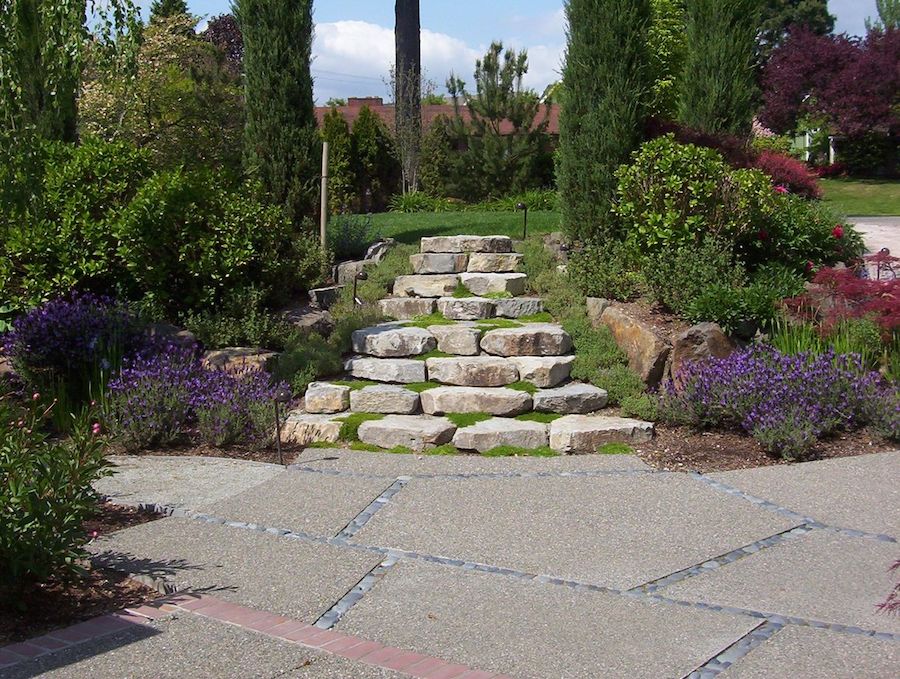
Crushed gravel or rock
Hardscape can be made from a variety of loose rocks or pebbles. In this home (shown below), we see that loose rock is combined with poured concrete and aggregate slabs to create a varied design. Moss growing in between the aggregate creates its own design and softens the edges. Head to any gravel supply store and you’ll see that the prices and styles of crushed rock are varied; you’ll want to have a good idea of your square footage needed to accurately budget for this project. Loose gravel can shift, and may be more difficult to remove debris, so consider the location and use during your planning stage.
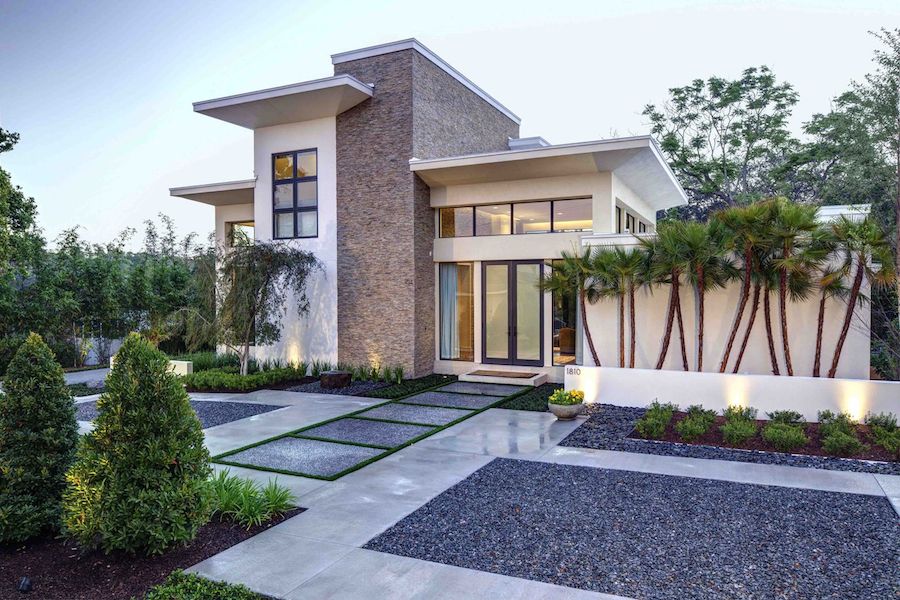
Wood
Decking material, like treated lumber or synthetic wood, is often used outside for walkways, patios or decks. Since wood can’t be placed directly on top of the soil, a wood plank walkway is most commonly built just above the ground, like a very short deck. Wood should always be treated to withstand the outdoor elements. Wood usually requires more maintenance compared to stone or rock and will need to be replaced over time. Because wood is built just above the ground, many homeowners hire a professional to construct the platform and ensure it is built up to code.
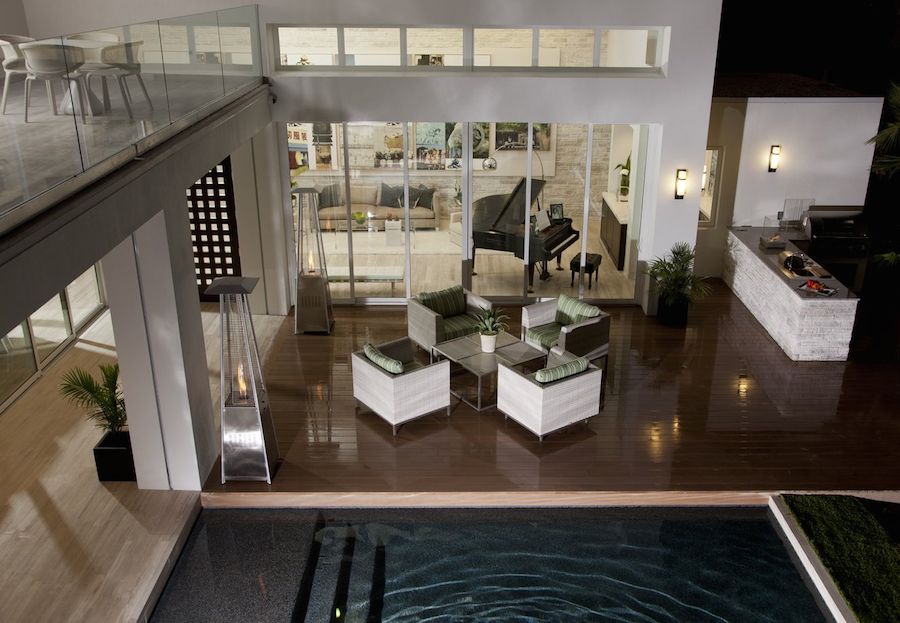
Top image credit: Phil Kean Designs
